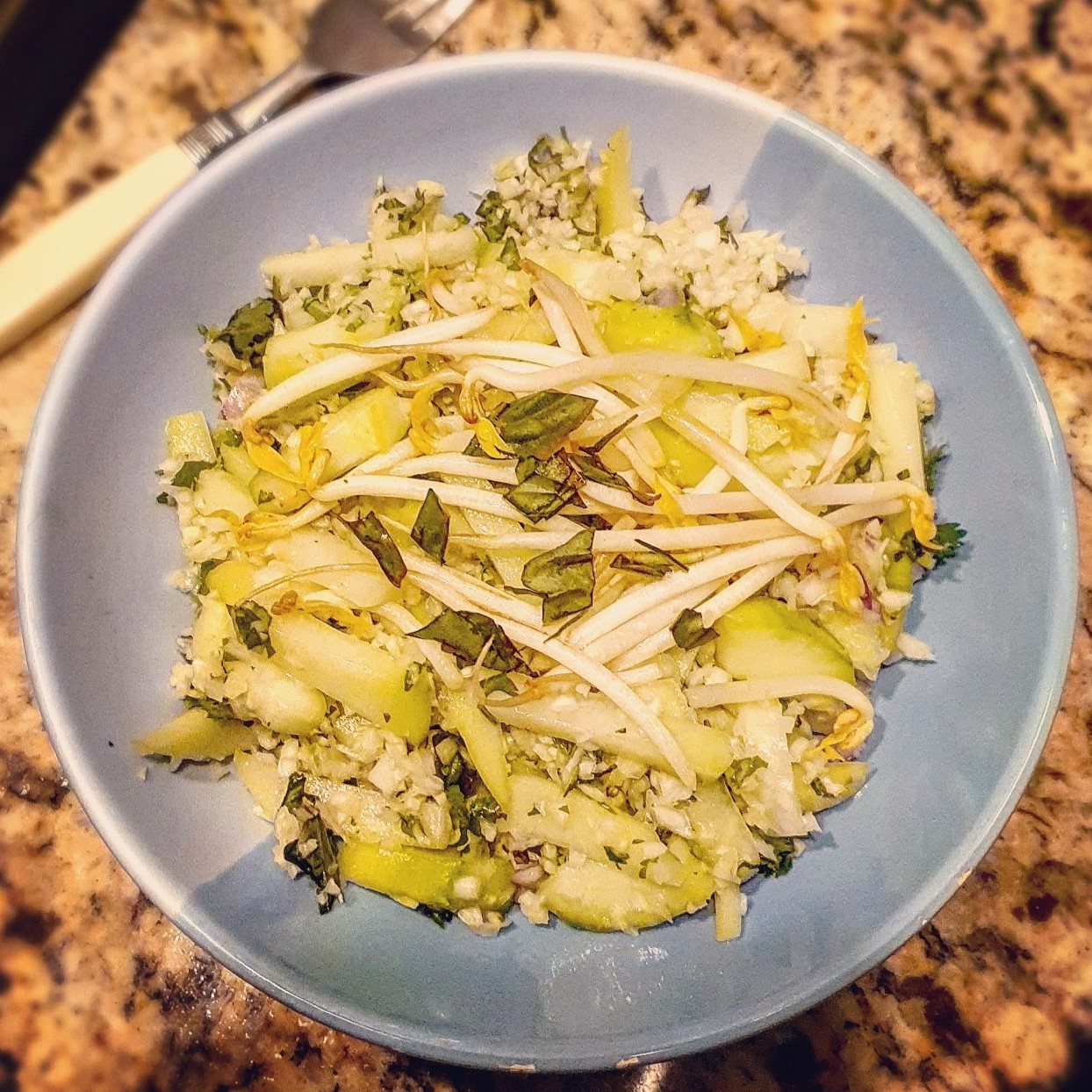Chayote for New Life!
May 13th, 2021
Although technically a fruit, chayote is eaten like a vegetable because you can eat the skin, seeds and even the flowers. Chayote, originally cultivated by the Mayans and Aztecs, derives its name from chayot the Nahuatl (language of Aztecs) word for vegetable. This vegetable-like fruit hosts a range of beneficial nutrients needed for body repair and growth, particularly when it comes to supporting new life.
This nutrient dense chayote is not only low in calories and high in soluble fiber, but is also a good source of Manganese, Potassium, Copper, Magnesium, Zinc and Vitamins C, B, K and particularly Folate. Chayote can provide the body with a whopping 47% of the Recommended Dietary Intake of Folate! Folate, also known as Vitamin B9, is a water-soluble B-vitamin and plays an important role in growth and development, which is vital for everyone but in particular for pregnant women and their unborn child.
While Folate is the natural form of B9 occurring in foods, Folic Acid is the synthetic form that is not adequately absorbed by the body. Since we cannot synthesize Folate in the body efficiently, adequate dietary intake throughout life is very important. Folate acts as a cofactor and a molecule that regulates many crucial biological processes in our body such as making DNA, forming red blood cells, and for the growth and repair of body tissues. During pregnancy folate requirements are 5–10 times higher than compared to the needs of non-pregnant women. The demand increases, especially around 5-6 weeks gestation, because the developing fetus requires extra amounts of folate for the growth and formation of the neural tube often when a women may not even know she is pregnant. The neural tube is a layer of cells that are flat at first, and then roll out into a tube to form the brain and spinal cord. If this tube doesn’t fuse properly due to the lack of Folate, the cells in the structure cannot function or grow properly and the tube may not close. This may lead to a neural tube defect such as spina bifida, or other spine, skull and/ or brain abnormalities. Boosts of Folate levels during this critical development stage of the fetus plays a vital role in the formation and development of arguably the most important bodily systems when creating new life!
Bottom line; if you are pregnant, trying to become pregnant, have already delivered a baby, or even if your body is in need of repair and regeneration; chayote will make an excellent addition to your regular meal times!
To select the best chayote, chose ones that are small, firm (not hard) and unblemished as these will be tender and not fibrous. Avoid any fruits that are sticky or discolored. You may often find when purchasing chayote that they come in their own little plastic bag. Store your fruit in these bags as this packaging ensures prolonged freshness for up to four weeks in the fridge! There are many delicious and nutritious ways to consume chayote, however if you wish to retain the benefits of Folate, it is best to consume this fruit raw. The flavor is a mild cucumber to apple-like taste, and I have shared my favorite way to prepare it, with a little Thai twist!

CHAYOTE REFRESHING SLAW
Serves 4
Can be eaten side meal, or main meal just add a good protein source
2 Chayote
1 Cucumber
¼ Cabbage finely chopped
2 TB Sesame Seed Oil
1 TB Rice Vinegar
1 TB Fish Oil
1 tsp Himalayan Salt
2 TB Cilantro finely chopped
2 TB Thai Basil finely chopped
1 Green Chili finely sliced
1 cup Mung Beans
Finely shred the cabbage, and cut into very fine pieces, place into a large mixing bowl and add in the sesame oil, massage the oil into the cabbage using your hands. This will soften the cabbage and intensify the flavors. Peel the skin off the chayote and cut into match stick sized pieces, peel, de-seed, and cut the cucumber into small 1-inch pieces, add to the bowl. Place the remaining ingredients in the bowl, and mix well. Top with mung beans and freshly chopped basil. Enjoy the refreshing taste!
